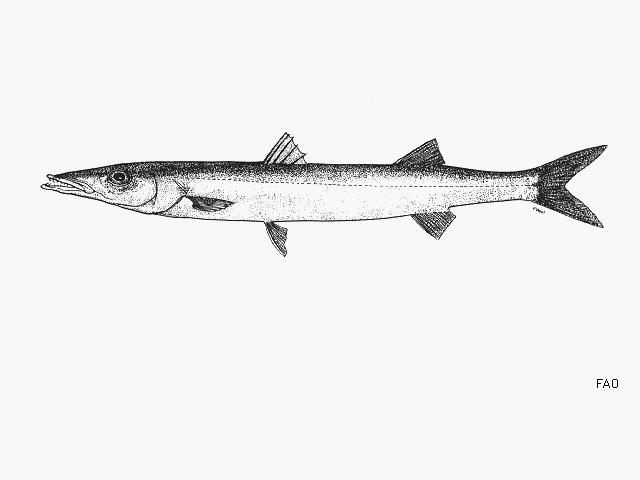| Sphyraenidae (Barracudas) |
| 145 cm FL (male/unsexed); max.weight: 12 kg; max. reported age: 12 years |
|
pelagic-neritic; marine; depth range 0 - 18 m, oceanodromous |
| Eastern Pacific: Alaska to Magdalena Bay, Baja California. Not common north of Point Conception (Ref. 11484). |
|
Dorsal spines (total): 6-6; Dorsal soft rays (total): 9-10; Anal spines: 1-1; Anal soft rays: 8-9. Color bluish or brownish dorsally, silvery ventrally (Ref. 6885). |
| Usually near shore or near the surface (Ref. 2850). Often in small schools (Ref. 2850). Young enter bays (Ref. 2850). Feed mainly on other fishes (Ref. 2850). Pelagic spawners (Ref. 56049). Migrate south from the California coast during autumn, but may remain in front of the Mexican coast throughout the year (Ref. 9345). Utilized fresh, dried or salted and frozen; eaten broiled and baked (Ref. 9988). Considered as potentially dangerous due to its large, sharp teeth and aggressive disposition, though there are no reports of attacks (Ref. 9988). |
|
Least Concern (LC); Date assessed: 02 May 2008 Ref. (130435)
|
| traumatogenic |
Source and more info: www.fishbase.org. For personal, classroom, and other internal use only. Not for publication.

